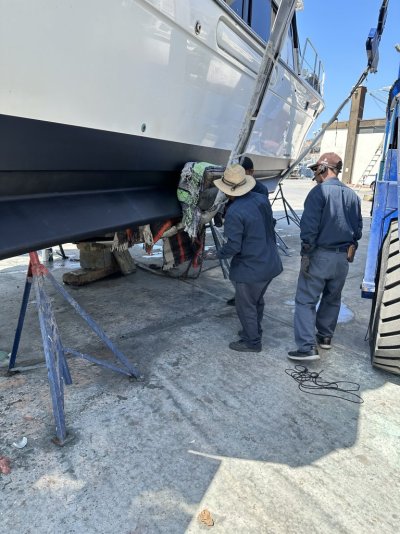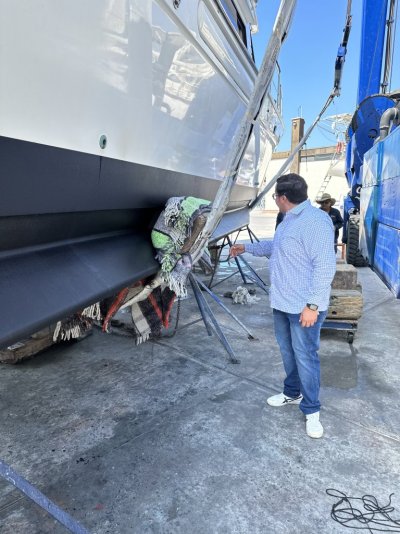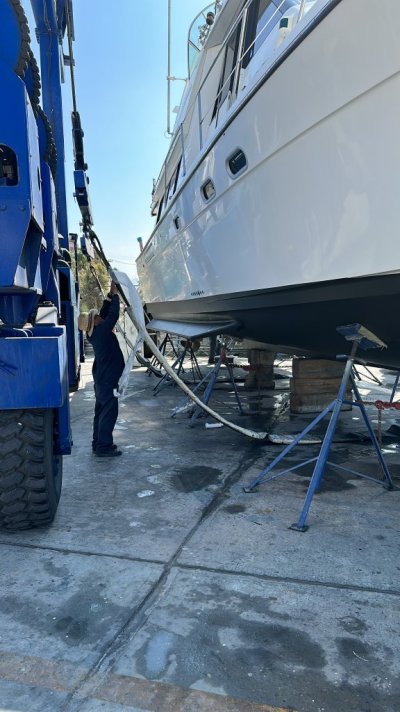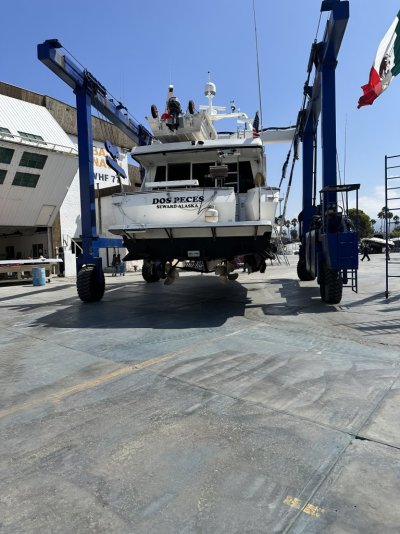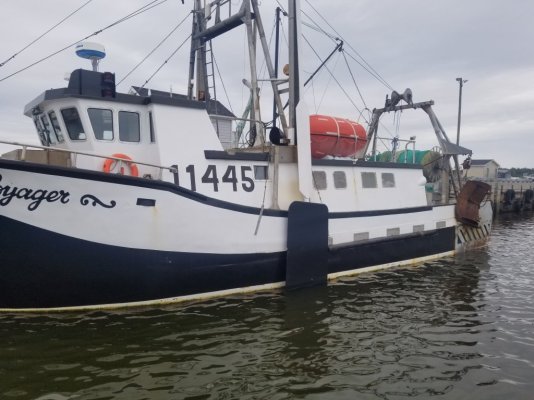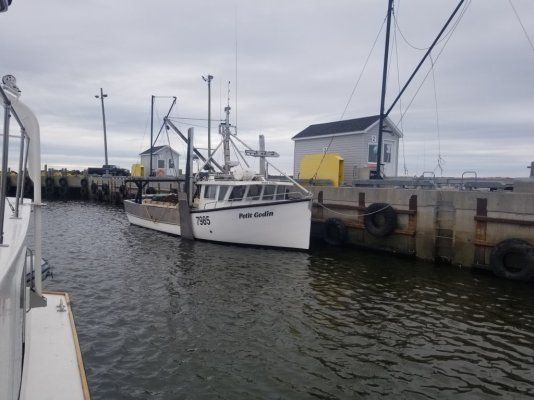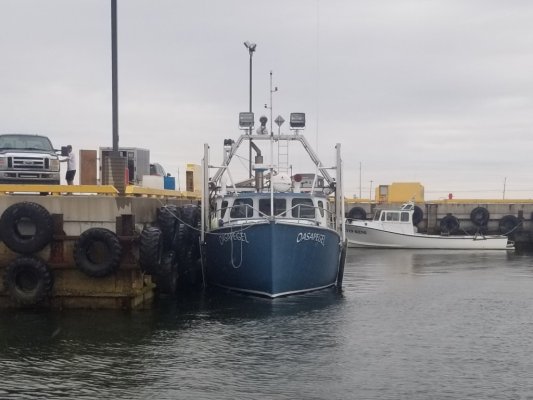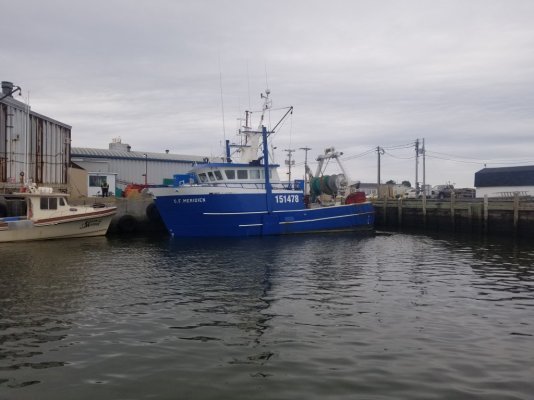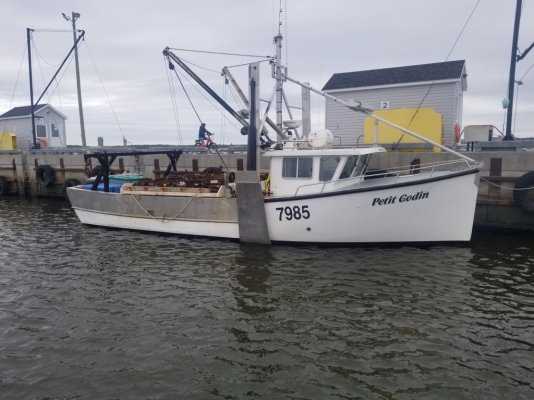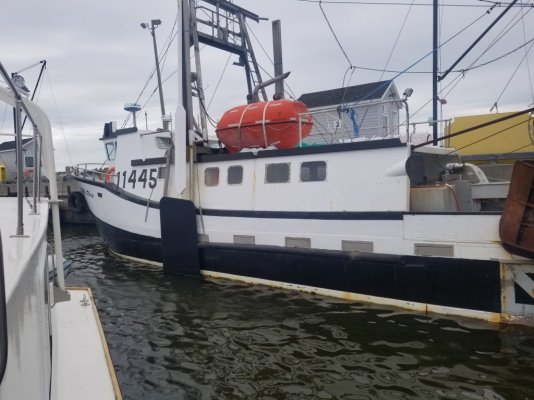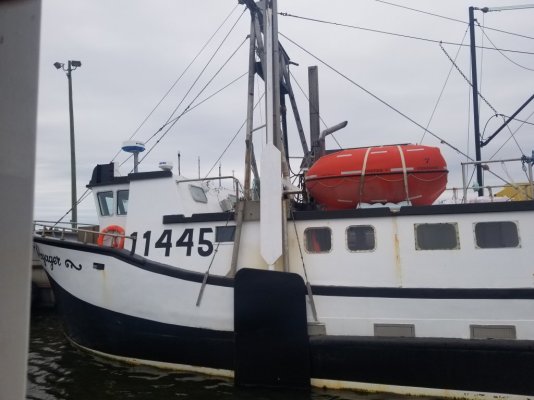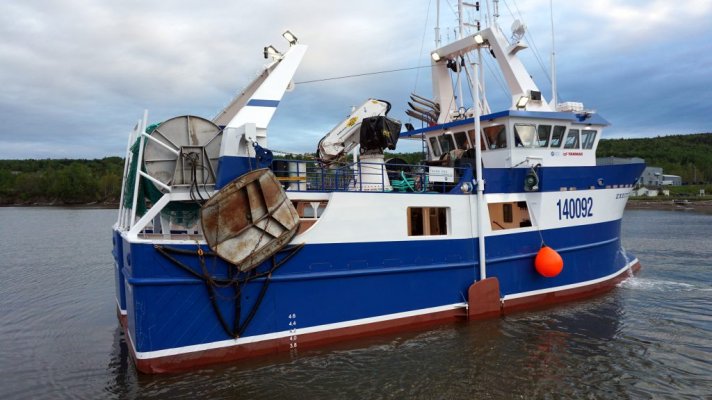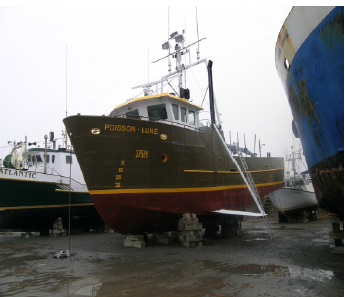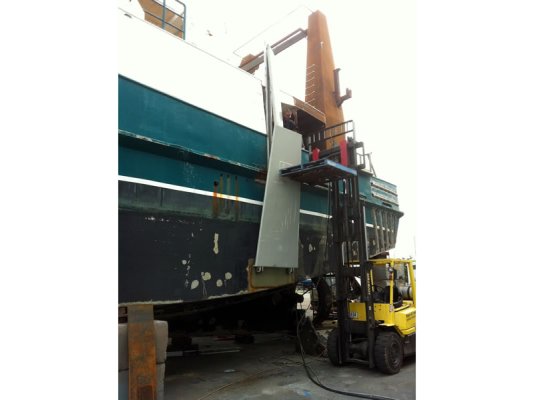long-cours.62
Guru
We are interested by this concept.
Because no energy required, low cost (if selfmade )
)
But can't find detailled info.
The wing is "square" ? Naca (it seams to be that on the photo below) ? Asymmetric section ?

On the photo below you can see where (the red line) we could fit that , it seam may be too much forward but is exactly at the same level than the actual fin.

And at this level we have the forward bulkhead of the engine room and also high structure to fit the "sliding part".
But we make a batwing at this place it can be only fitted 30 cm below the wl, if we want fit it more deeper (for example on the actual structure of the fin 15mm tick with big stiffener behind may be T200x100)
we must make a wing like the first photo : with an angle in this case could be more 65 cm below wl.
First I think fit the "sliding part" only on the withe upper part (because it will be an "elegant" solution, this white part is 10 cm "deeper" than the grey one and the sliding part not "overhang the grey part), unfortunately in this part the available length is only 1950 mm...not enough to bring back the wing near the hull... (except if we use one fixed part + a ram but it is not KISS ...)
If someone have detailled infos welcome !
Because no energy required, low cost (if selfmade
But can't find detailled info.
The wing is "square" ? Naca (it seams to be that on the photo below) ? Asymmetric section ?
On the photo below you can see where (the red line) we could fit that , it seam may be too much forward but is exactly at the same level than the actual fin.
And at this level we have the forward bulkhead of the engine room and also high structure to fit the "sliding part".
But we make a batwing at this place it can be only fitted 30 cm below the wl, if we want fit it more deeper (for example on the actual structure of the fin 15mm tick with big stiffener behind may be T200x100)
we must make a wing like the first photo : with an angle in this case could be more 65 cm below wl.
First I think fit the "sliding part" only on the withe upper part (because it will be an "elegant" solution, this white part is 10 cm "deeper" than the grey one and the sliding part not "overhang the grey part), unfortunately in this part the available length is only 1950 mm...not enough to bring back the wing near the hull... (except if we use one fixed part + a ram but it is not KISS ...)
If someone have detailled infos welcome !

